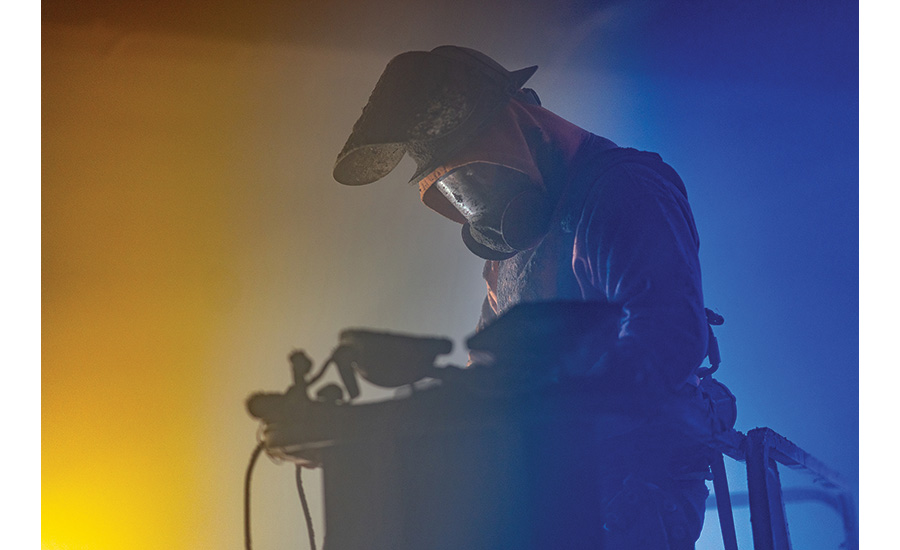Images and The Construction Industry
ENR's 2019 Contest Winners: All The Photos Show and What They Don't
What the age of digitization adds to the craving for the corporeal

McFarland literally waited for the dust to settle while photographing shot-blasting in a confined area. The room would “fog out in 60 seconds,” he said. “Everything was sucked out and I’d take a shot.” He said LED and sodium-vapor lights created an “extremely dramatic shooting in fog.”
Photographer: Matt McFarland
Photographer: Matt McFarland
City Foundry, St. Louis
Submitted by Allison Vollmar, Clayco
McFarland literally waited for the dust to settle while photographing shot-blasting in a confined area. The room would “fog out in 60 seconds,” he said. “Everything was sucked out and I’d take a shot.” He said LED and sodium-vapor lights created an “extremely dramatic shooting in fog.”
Photography existed as an exclusively chemical and mechanical process until the 1970s, when inventors at Kodak produced the first crude digital camera. It converted light into electrical charges and digital information, ones and zeros. The rap on digital photography has been that the images lack a depth and richness associated with the pre-digital processes, such as Kodachrome. Yet what we see from the digital cameras in crispness and brilliance satisfies most of our needs.
The question then is why in this age of digitization we reap so much joy from photos whose subject is the very solid and corporeal wonders of the construction jobsite (the kind that grace the pages of ENR’s annual Year in Construction photo contest). The answer is that they capture some things that the BIM model isn’t interested in: The wreaths of mist enshrouding the high-rise building. The specks of mud on the laborer’s goggles. The surveyor’s gaze. Somehow, instead of diminishing the physical, the growing digital realm has helped us appreciate the nondigital world more keenly.
Construction photos explore the glory of the not-yet-finished. They search the worker’s posture and body language. They ennoble all kinds of small things and exaggerate the large: rebar stars, excavators excel. The lens flatters cranes and makes art objects of clips and hooks and cables.
In an age of video and podcasts, of round-the-clock information bombardment, still photography proves that less is more. We don’t expect the crew repairing Oroville Dam’s spillway to “hold still” for the photographer. The captured image slices open the action and stabilizes it for us to examine. The motion is implied. To our mind, what’s left out and left to suggestion is just as present as what is seen. Can you not feel the boom as the explosives bring down the roof of the UVA arena? Do you not hear the growl and crunch as a demolition jaw devours the granite facade of the BMO Bradley Center? Unless you visited these jobsites yourself and had the photographers’ powers of observation, perseverance and good luck, these images are the next best thing to being there. Take your time and let your mind roam freely over what’s shown and what isn’t.
Related Article: ENR's 2019 Photo Contest: 360° Review




